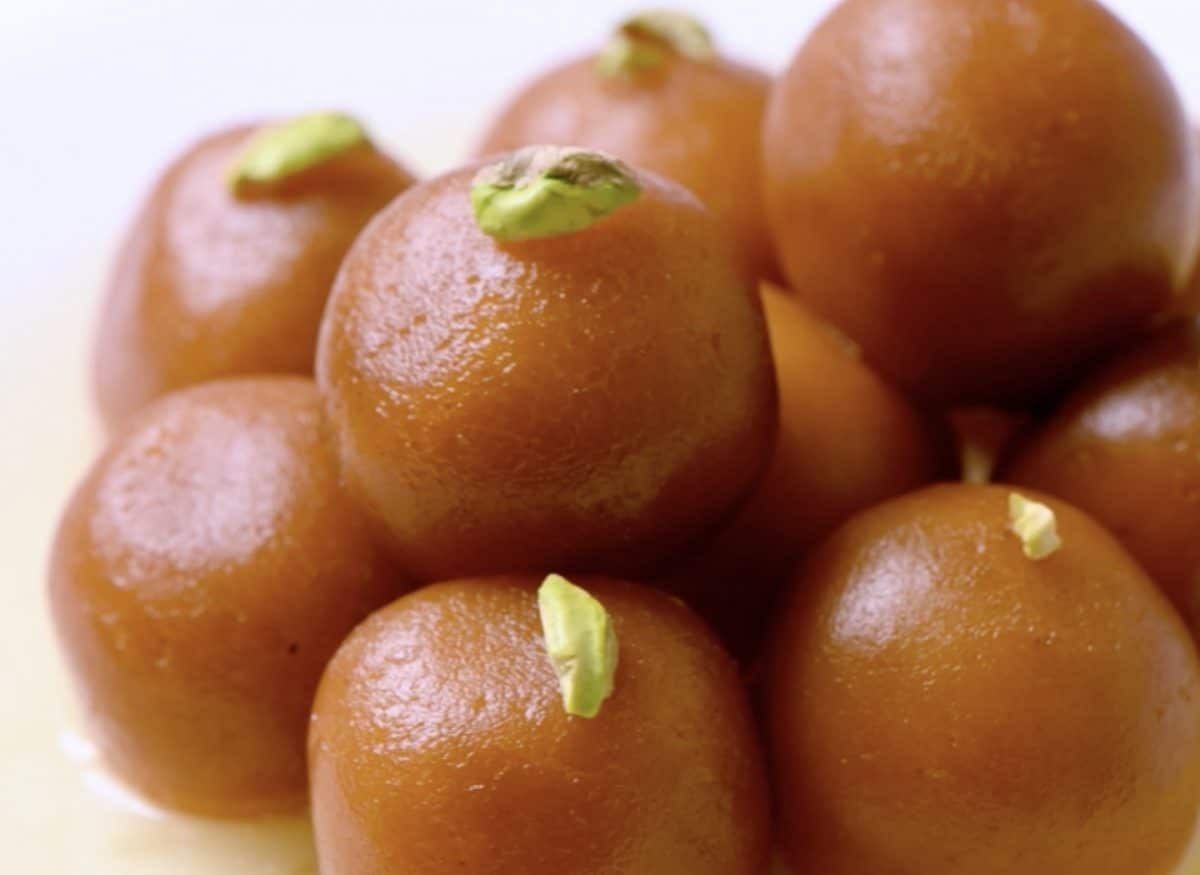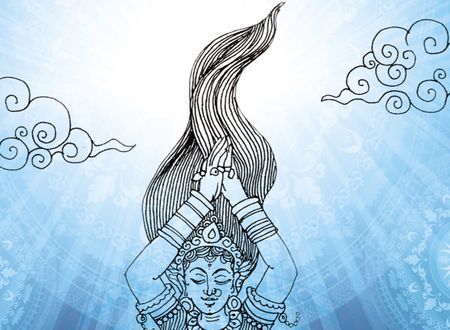I was quite excited. The year was 2008 and we had organized the recitation of the Srimad Bhagavatam 1 in Haridwar. Although it doesn’t have to be that way, usually organizing the Bhagavatam is a seven-day elaborate event. Much like a grand festive celebration. A venue is hired and a pandal is erected so everyone may sit comfortably for several hours. You have to arrange accommodation for the near-and-dear ones. Three meals are served daily out of which lunch is open to the public and anyone can partake of the feast. A specialist orator is organized who is well versed in the scripture and narrates the entire Bhagavatam peppered with music, humor, wisdom including his/her personal philosophy. Naturally, a team of musicians accompanies them. A group of brahmins kicks off the ceremony with a pooja lasting several hours and they quietly chant the Sanskrit verses in the background throughout the seven days while the orator takes centre stage.
It had been Matarani’s (my mother) dream to host the Bhagavatam at least once in her lifetime. As her son, I was elated to be
In the dining room, their seats had been arranged. High seats for the maha
No saint showed up at the appointed hour. And then some sauntered in at 12:30 and waited for the others. By 1:30 pm, eight of them with their assistants and disciples were in. And now the drama started. They wanted food but three of the senior-most maha
Finally, by 2 pm all the saints had arrived. With all due respect, I felt I was in a geometry class as the seats were filled with various shapes, mostly round.
“I don’t think they should be eating puris,” I whispered to Matarani. “They need exercise more than they need halwa-puri.”
“No, beta,” she said to me. “Don’t say things like that! They are saints, they represent our dharma, vastra ko pranam hai.” (We must offer our respects to the ochre robe.)
I am not particularly proud of my thoughts or remarks on that particular day, both were unnecessary but the divinity I had expected the room would be buzzing with was absent like the nutrition in french fries.
“Jaldi lao,” a senior saint hollered. “Ghee
“First serve our Maharaj
Suddenly, the whole room was full of chatter as, barring a couple of saints, everyone was giving orders. It was exactly like a high-school classroom when the teacher steps out for a minute. In this case, all the teachers were in the room while we, a group of hungry students, stood in line to serve.
To be honest with you, this experience not only caught me unawares but threw me off-balance too. I was struggling to contain my disapproval and displeasure. Everything in that room screamed the exact opposite of what dharma was supposed to be about. What had it come to… I took Matarani’s permission and stepped aside. When it was time for them to go, she called me again to make the final offerings. I immediately made way for when Matarani calls, Swami shows up. No questions asked. Each maha-mandaleshwara was given clothes, money, and gold while all the others were only offered clothes and cash. “This is how it must be,” the presiding Guruji had said. “The senior ones must be given more than the others.”
This incident left such a deep impact on my mind that when I set out for my spiritual journey two years later, I made it a point to not go to prominent ashrams and religious heads in search of my guru. I came off so disillusioned that day that I felt the glorious Sanatana dharma was in desperate need of real saints. We need more Vivekanandas, Shankaracharyas, Ramakrishnas, Tukarams, and Ramanas. We can’t afford to introduce dharma to present and future generations through people who are called saints just because they head religious organizations or are in saffron robes. Of course, India is full of countless amazing living saints who uphold the values of dharma, but the fact that eighty percent of the sample size in that dining hall that day was anything but that shook me.
When I went back to my room, I looked back and replayed the whole episode in my head. Here we were waiting with bated breath, wearing our hearts on our sleeves, with all the reverence we could muster, washing their feet, prostrating before them, and serving them to the best of our ability but why? What makes someone a saint? Robes? Initiation? Sound knowledge of the scriptures? Not at all, my friend. It’s one thing and one thing alone and that is, your conduct. Inner and outer conduct. When anyone is initiated into sannyasa, the path of renunciation, this is the vow they take (in my lineage, at least):
“Is kshan se, main is nashvar sansar ka tyag kar, sannyast dharm mein pravesh karta hoon.” (From this moment on, I renounce the transient material world and hereby enter the sacred world of dharma.)
What is this sacred world of dharma, the path of renunciation? Is it to mount a high seat and devour thali meals while a bowl is brought right there so you wash your hands? Or is it to enter into a room with this sense of entitlement that I am a saint? Or maybe to see others as lesser-mortals? You and I know, that’s not the case. It’s just one thing as I wrote: conduct.
Outer conduct: Being truthful and genuine. Treating others with the same love and respect that they treat you with. In other words, living in the world with a sense of humility and service. A saint who doesn’t serve humanity is no better than a corrupt politician; both are portraying a false image.
Inner conduct: Compassion, love, empathy, and awareness. Knowing that we have a duty of care towards all sentient beings.
Have these virtues, already? You are a saint. In the absence of such impeccable conduct, one may be a guru, a Swami, a priest, or whatever but certainly not a saint. They may give you wisdom but that’s about it.
S: service (an indomitable spirit to serve)
A: awareness (know what you are thinking, speaking, and doing)
I: inherent compassion (love and compassion flow from you, naturally)
N: no ego (giving equal respect to those who offer you respect)
T: Truthfulness (being genuine and truthful)
It’s as simple as that. Besides, saintliness is more important than sainthood.
A year before slavery was abolished in the United States, Abraham Lincoln was taking a stroll with his close aide when he met a black beggar who greeted him respectfully. The President, in turn, tipped his hat to the beggar.
“Why would you show any deference to a man like that?” The official said to Lincoln.
The president stopped and said, “I have never wanted anyone to be more courteous than I am.” 3
In my mind, that’s what saintliness is all about. To not just be courteous or polite but to be so humble, loving, and respectful that it evokes nothing but divine love in the other person. No matter if you are a householder or single, whatever religion you may ascribe to, you may or may not be initiated, the truth is, no one can stop you from being a saint.
Just as a gulab-jamun is dipped and soaked in sweetness, a true saint is full of humility, truth, and compassion. At least, that is my view. I could be wrong though I hope not.
Peace.
Swami
Notes
A GOOD STORY
There were four members in a household. Everybody, Somebody, Anybody and Nobody. A bill was overdue. Everybody thought Somebody would do it. Anybody could have done it but Nobody did it.
Don't leave empty-handed, consider contributing.It's a good thing to do today.









Comments & Discussion
301 COMMENTS
Please login to read members' comments and participate in the discussion.